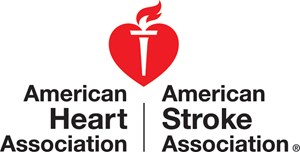
Source: American Heart Association
Compression-Only CPR Improves Survival With Good Brain Function
Study Highlights :
- A new Japanese study shows that early compression-only CPR, without rescue breathing, kept more people alive with good brain function after they had a sudden cardiac arrest.
- Survival rates of more than 40 percent were noted when cardiac arrests were observed, bystanders provided early compression-only CPR, and an electric shock was given from a publicly accessed defibrillator.
DALLAS, Dec. 10, 2012 (GLOBE NEWSWIRE) -- Chest compression-only CPR performed by bystanders — without rescue breathing — keeps more people alive with good brain function after having a sudden cardiac arrest, according to a Japanese study reported in Circulation: Journal of the American Heart Association.
Sudden cardiac arrest is the abrupt loss of heart function, usually resulting from an irregular heart rhythm.
Compression-only CPR from bystanders should start immediately after the cardiac arrest, followed by a shock with an automated external defibrillator, or AED, said Taku Iwami, M.D., Ph.D., study lead author and senior lecturer in the Department of Preventive Services at Kyoto University School of Public Health in Japan.
"Early initiation of CPR and shocks from a public access AED are the keys to saving lives from sudden cardiac arrest," he said.
An AED is a portable device that delivers an electric shock to reestablish an effective heartbeat. These devices are available in public areas in the United States and in countries like Japan where the study was conducted.
Researchers analyzed the records of 1,376 people in Japan who had sudden cardiac arrests between 2005 and 2009 that were witnessed and received CPR and AED shocks from bystanders. Of these arrests, 36.8 percent received compression-only CPR and 63.2 percent received conventional CPR with chest compressions and breaths.
When comparing survivors after one month, researchers found:
- More than 46 percent (46.4) of the compression-only CPR patients were alive, compared to 39.9 percent of those who received conventional CPR.
- The chest-compression-only CPR led to 40.7 percent of patients having favorable brain function compared to 32.9 percent of those who received traditional CPR. Patients were considered to have favorable neurological status if they had normal brain function or if they lived independently — even if they had some neurological impairment.
In addition to the improved outcomes, performing CPR with chest compressions only is also preferable because it's easier to learn and preferred by those uncomfortable with mouth-to-mouth rescue breathing, Iwami said.
"Rescue breathing is difficult for some people to perform and might interrupt chest compressions," he said.
The study results also apply to people in the United States and other countries, Iwami said. "Most victims don't receive any CPR, so we need to encourage chest-compression-only CPR and public access defibrillation programs."
The study reports that the combination of early defibrillation with public-access AEDs and compression-only CPR provided by bystanders in witnessed cardiac arrest can provide neurologically favorable survival rates of over 40 percent.
"Across the United States, too many people are dying from sudden cardiac arrest because family members and friends of the victim are unsure how to help. This study confirms that Hands-Only CPR is highly effective. Plus it's easy to do," said Michael Sayre, M.D., national spokesperson for the American Heart Association and Professor of Emergency Medicine at the University of Washington.
The American Heart Association recommends that bystanders do Hands-Only CPR – pushing hard and fast in the center of a victim's chest – if they see an adult suddenly collapse.
Iwami said further studies are needed on whether bystanders should perform compression-only CPR on children.
For infants (up to age one) and children (up to puberty), the association recommends CPR with a combination of breaths and compressions.
Co-authors are: Tetsuhisa Kitamura, M.D., M.Sc., Dr.P.H.; Takashi Kawamura, M.D., Ph.D.; Hideo Mitamura, M.D., Ph.D.; Ken Nagao, M.D., Ph.D.; Morimasa Takayama, M.D., Ph.D.; Yoshihiko Seino, M.D., Ph.D.; Hideharu Tanaka, M.D., Ph.D.; Hiroshi Nonogi, M.D., Ph.D.; Naohiro Yonemoto, Dr.P.H.; and Takeshi Kimura, M.D., Ph.D. Author disclosures are on the manuscript. The study received no outside funding.
Learn more about the American Heart Association's Hands-Only™ CPR campaign. In addition, read the association's 2008 scientific statement recommending Hands-Only CPR.
For the latest heart and stroke news on Twitter, follow @HeartNews.
The American Heart Association logo is available at http://www.globenewswire.com/newsroom/prs/?pkgid=9940
###
Statements and conclusions of study authors published in American Heart Association scientific journals are solely those of the study authors and do not necessarily reflect the association's policy or position. The association makes no representation or guarantee as to their accuracy or reliability. The association receives funding primarily from individuals; foundations and corporations (including pharmaceutical, device manufacturers and other companies) also make donations and fund specific association programs and events. The association has strict policies to prevent these relationships from influencing the science content. Revenues from pharmaceutical and device corporations are available at www.heart.org/corporatefunding.
Additional resources, including multimedia, avaiable in the right column of this link:
http://newsroom.heart.org/pr/aha/_prv-compression-only-cpr-improves-241452.aspx
For Media Inquiries: (214) 706-1173
Tagni McRae: (214) 706-1383; Tagni.McRae@heart.org
Bridgette McNeill: (214) 706-1135; Bridgette.McNeill@heart.org
Julie Del Barto (broadcast): (214) 706-1330; Julie.DelBarto@heart.org
For Public Inquiries: (800) AHA-USA1 (242-8721)